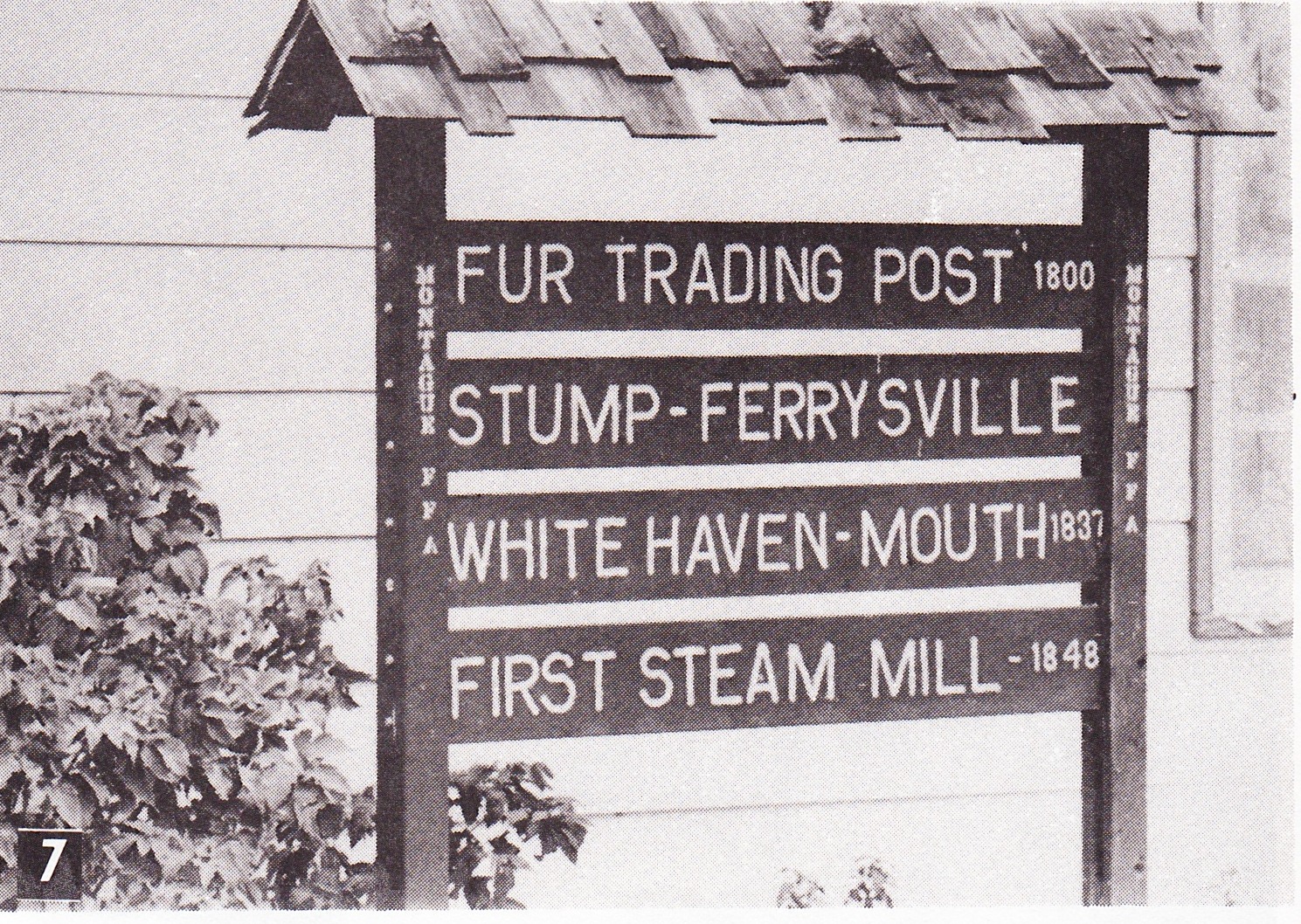
Nestled along the serene shores of White Lake, the tale of White River Village is one of prosperity and decline, intimately tied to the fortunes of the lumber industry. As travelers today drive along the Old Channel Trail, few realize they are passing the ghostly remnants of a once-thriving settlement known simply as “the Mouth.”
A Boomtown is Born
In 1837, Charles Mears arrived at the Mouth of White River, marking the beginning of what would become a bustling community. Mears, a pioneer of White Lake, built the area’s first steam mill in 1848, transforming the Mouth into a hive of activity. The village was known by various names, including “Stump Postoffice,” “Ferryville,” and “White Haven,” but locals simply called it the “Mouth.”
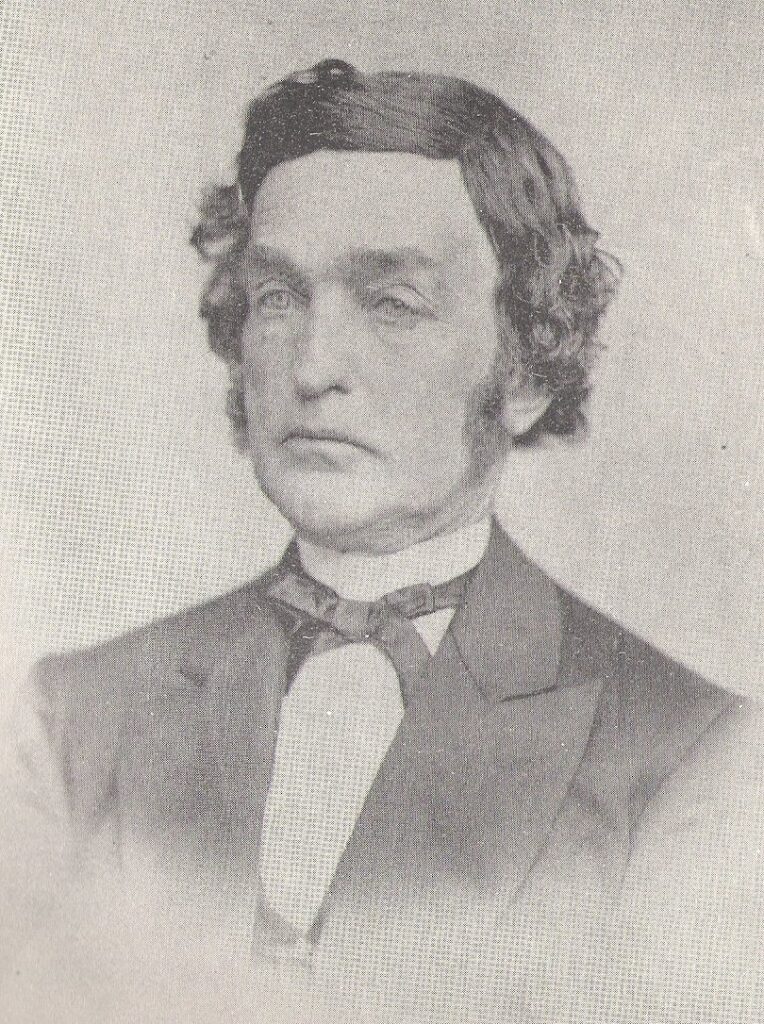
The Mouth served as a vital hub for the lumber trade, with logs transported from the dense forests of Michigan to the shores of Lake Michigan. By 1854, the government had established a post office there, officially naming it White River Village. The community flourished with the establishment of mills, hotels, and stores, becoming a central point for commerce and social life.
The Heartbeat of the Village
The village’s layout included a school atop a hill and a cemetery nearby, both enduring symbols of a once-vibrant community. The old Ferry mill and store, along with Cain’s and Hobb’s hotels, were key landmarks. The mail service, crucial for communication, came up the beach from Grand Haven, with residents eagerly awaiting their deliveries.
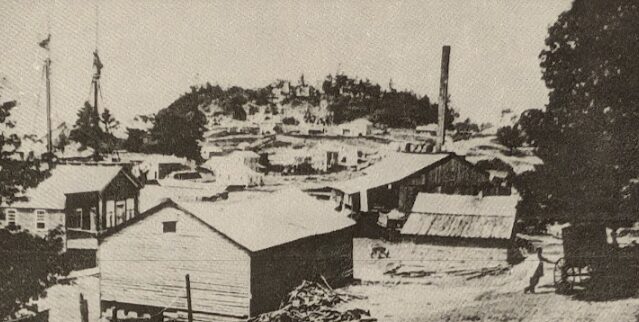
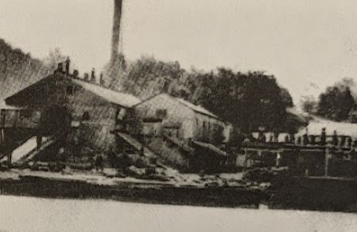
By 1860, the village had grown to include 364 people, with Whitehall and Mears also thriving nearby. The first mills were water-powered, reaching all the way to Duck Lake and Rochdale Inn. However, as the timber resources were exhausted and the Civil War ended, the lumber trade began to shift.
The Decline of the Mouth
The decline of the Mouth was precipitated by the transfer of activities to the new twin villages at the lake’s head. The population and trade dwindled as the Old Ferry mill’s workers sought employment elsewhere. The final blow came with the diversion of the current away from the Old Channel, a once-popular harbor for Lake Michigan vessels. With the cessation of these activities, the village declined into obscurity.
By the end of the 19th century, the bustling community at the Mouth had faded, leaving behind only traces of its vibrant past. Today, the old cemetery and the remnants of the village offer silent testimony to a bygone era, a stark reminder of the transient nature of boomtowns and the inexorable march of progress. Today the only thing that reminds us of the bustling town is the historical marker beside Old Channel Inn. https://www.facebook.com/OldChannelInn/
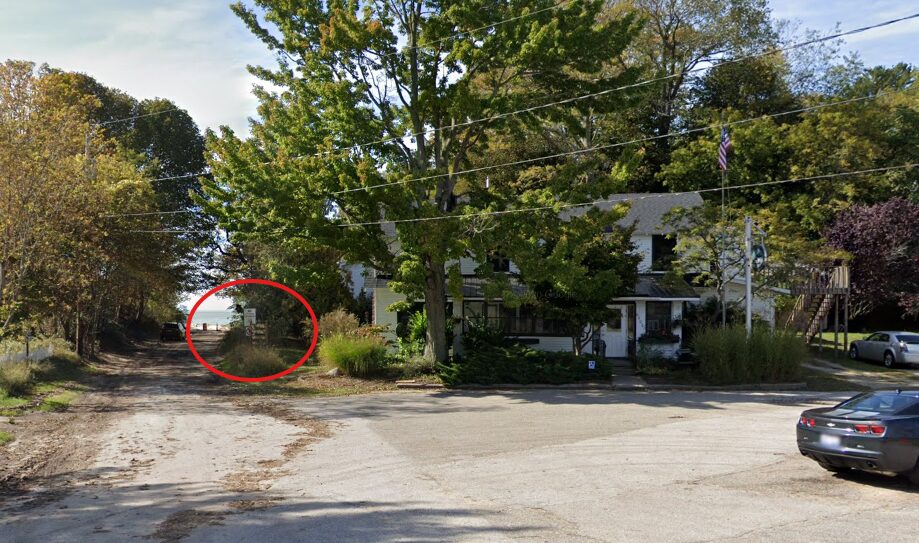
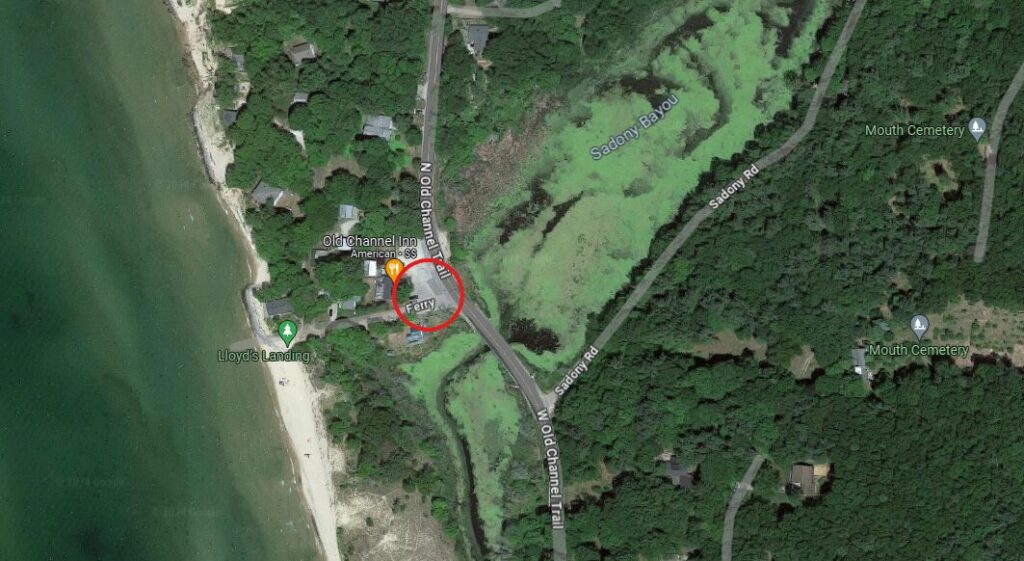
The Legacy of White River Village
Despite its decline, the story of White River Village remains a poignant chapter in White Lake’s history. The industrious spirit of pioneers like Charles Mears and the community’s brief but intense period of prosperity reflect the broader narrative of American expansion and development. The village may have disappeared, but its legacy endures in the history books and the memories of those who once called it home.
As we reflect on the rise and fall of this deserted village, we are reminded of the impermanence of human endeavors and the enduring power of nature to reclaim its own. The deserted village of White River stands as a testament to a time when the shores of White Lake echoed with the sounds of industry and the hopes of a burgeoning community.
Research by W.L. Lipka.
Interactive White Lake History
As we deliver articles weekly, I challenge you to be curious, explore the local area, and take pictures at these historic locations, and tag CatchMark Community.
Next week we will explore the legend of a massacre. If you enjoy history and like our content please like and subscribe to our online resources. Also, check out the White Lake Area Historical Society website listed below.
http://www.whitelakeareahistoricalsociety.com/
https://www.facebook.com/CatchMarkCommunity
Brent is the Managing Partner of CatchMark Technologies and a seasoned technologist with over 25 years of experience in IT leadership, cybersecurity, and technical operations. He began his career serving in the U.S. Army, where he worked extensively with electronics—laying the foundation for his lifelong passion for technology and problem-solving. Brent holds a Certified Information Systems Security Professional (CISSP) certification and currently leads CatchMark’s Cybersecurity and Tech Support teams. Known for his strategic thinking and hands-on expertise, he excels in guiding secure, scalable solutions and driving innovation across complex technical environments.
Must See
-


Community
/ 23 hours agoMontague-Whitehall Rotary Club Donates $2,500 to Support Clean Water in Haiti Through HANWASH
By investing in clean water, a basic human right, the Montague-Whitehall Rotary Club is...
By Brent Raeth -


Community
/ 3 days agoPetunia Patrol: Keeping White Lake Beautiful
Each summer, the streets of Montague and Whitehall burst into color, lined with lush,...
By Amy Yonkman -


Arts/Entertainment
/ 3 days agoWhite Lake Area Live Music Lineup: June 2–8, 2025
Eight Whitehall and Montague venues are bringing the music this week, with 21 live...
By Amy Yonkman












